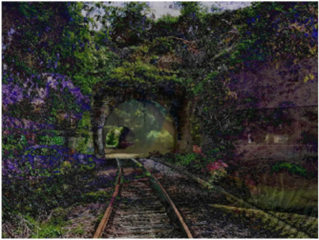Protecting Patent Rights When Using Generative AI for Engineering
Generative artificial intelligence (AI) tools are quickly carving out their place in the engineering workflow. Whether used for software development, computer-aided design (CAD), optimization, error correction, data analysis or one of the many other useful applications of AI, it is rare to find an engineered product that has not, in some way, been affected by AI. Which leads to an increasingly common question among tech entrepreneurs: Can I patent an invention created using generative AI?
The answer is, yes! You can patent an invention created using generative AI so long as you can name at least one natural (i.e., human) inventor. In patent law, the term “inventor” is defined as “the individual or, if a joint invention, the individuals collectively who invented or discovered the subject matter of the invention”[1] The patent office has clarified that “[i]n the context of AI-assisted inventions, natural person(s) who create an invention using an AI system, or any other advanced system, must contribute significantly to the invention.”[2] However, the patent office also cautions that “[m]erely recognizing a problem or having a general goal or research plan to pursue does not rise to the level of conception.”[3]
What this means is that you can patent an invention created using AI, but a human must have also contributed significantly. In practice, this is usually the case. After all, it generally takes a knowledgeable human to provide a good prompt to a generative AI engine. Nevertheless, here are some steps you can take to avoid complications when filing a patent application for an invention made using AI.
1. Generate AI prompts that propose a solution to an engineering design problem as opposed to merely recognizing a problem. For example, directing a generative AI engine to “fix this design so the joint does not break under stress” could be viewed as merely recognizing a problem, without contributing significantly. On the other hand, directing the engine to “design a reinforcement bracket that will stabilize this joint while also providing sufficient flex to avoid cracking” may, by proposing a bracket, sufficiently contribute to the solution to ensure a human being may be named as an inventor.
2. Record and store each prompt used for generative AI in the design process. Even if not submitted to the patent office or included as part of the patent application, these prompts can help your patent attorney determine the scope of the invention and the significance of each inventor’s contributions to the patent claims.
3. Contact a registered patent attorney who is familiar with patenting AI assisted design and can also help guide you through the patenting process in general.
At Parsons Behle & Latimer, we have the expertise to help you protect your intellectual property, including expertise using patents to protect inventions made using generative AI. Let us know how we can serve you to ensure that your intellectual property is secure.
[1] 35 U.S.C. 100(f).
[2] 89 Fed. Reg. 10048 (February 13, 2024).
[3] Id.
Affirmed: Works Created Exclusively with AI Not Eligible for Copyright Protection
The United States Court of Appeals for the District of Columbia recently affirmed a district court decision refusing to allow copyright registration for an artwork created with artificial intelligence (AI). See Thaler v. Perlmutter, 130 F.4th 1039 (D.C. Cir. 2025). The issue presented to the court was whether a machine can be an author under the US Copyright Act.
Stephen Thaler, the individual who brought the case, used an AI tool he refers to as the “Creativity Machine” to originate the artwork shown below titled, “A Recent Entrance to Paradise.”

Thaler submitted a copyright registration application for the artwork listing the Creativity Machine as the work’s sole author and himself as the work’s owner. The Copyright Office denied Thaler’s application outright citing the Copyright Act’s human authorship requirement. Thaler appealed that decision, and the United States District Court for the District of Columbia affirmed.
Thaler then appealed the district court’s decision, proffering the following four arguments:
(1) The natural meaning of “author” is not confined to human beings.
(2) The human-authorship requirement wrongly prevents copyright law from protecting works made with AI.
(3) The Copyright Act’s work made-for-hire provision allows him to be considered the author of the work at issue because the Creativity Machine is his employee.
(4) He is the work’s author because he made and used the Creativity Machine in its creation.
The Court rejected the first three arguments, reiterating that the Copyright Act “requires all eligible work to be authored in the first instance by a human being.” Thaler v. Perlmutter, 130 F.4th 1039, 1041 (D.C. Cir. 2025). The court refused to consider the fourth argument on the basis that it was waived below. Id.
This outcome aligns with recent decisions of other courts both within and outside the U.S., including in Australia and Europe, which have similarly declined to allow registration of works created with AI. Given these decisions and the stance of the Copyright Office, it is a safe bet to assume that copyright protection will not attach to a creative work generated by AI, and the work will be forfeited to the public domain for anyone to use. For this reason, we recommend avoiding or significantly limiting the use of AI in generating creative works, particularly if they are created for a commercial or competitive advantage purpose.
Parsons' copyright attorneys draw upon a broad range of experience in technology, the arts and the law to serve the needs of clients who are creators or consumers of creative works. To discuss the matter above or other related IP matters, contact Alexandra Hodson by calling (208) 562-4900 or send an email to ahodson@parsonsbehle.com.

